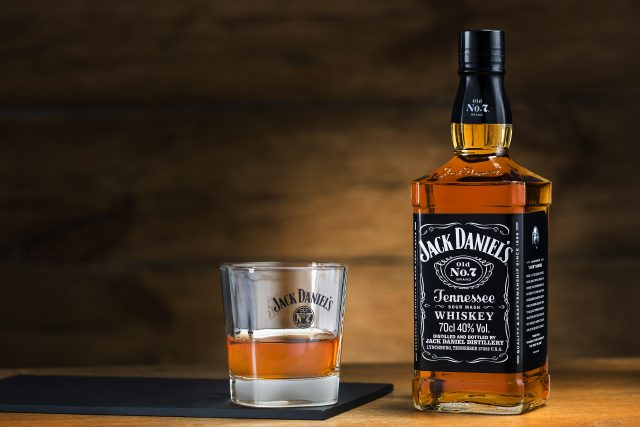Jack Daniel’s returns to growth following pandemic-driven sales slump
By db staff writerBoth Pernod Ricard and Brown Forman beat analysts’ estimates when they announced results last week.

For the 12 months to the end of June the French group achieved organic growth of 18.3% and very strong organic operating margin expansion of 213 basis points.
For its part Brown-Forman posted sales growth of 20% for the first three months of its financial year.
These strong figures need to be viewed against those for the same period last year when the coronavirus pandemic created havoc but both companies were justifiably pleased with their performances.
For Brown-Forman the most significant improvement was Jack Daniel’s Tennessee Whiskey returning to growth with underlying net sales 21% ahead, or 6% on a two-year average. As a predominantly on-trade brand Jack Daniels suffered disproportionately during the lockdowns.
Lawson Whiting, Brown-Forman’s president and chief executive officer said his company’s results “were driven by the strength of our portfolio, which benefited from the re-opening of the on-premise, sustained at-home consumption, and continued premiumization trends.”
He also predicted that the growth in US home consumption caused by the pandemic would not reverse.
In Paris Alexandre Ricard, Pernod Ricard’s chairman and CEO said: “The business rebounded very strongly during FY21 to exceed FY19 levels. We expect this good sales momentum to continue in FY22 with, in particular, a very dynamic Q1.” However, he declined to put a figure on that prediction.
He said “Sales grew in all regions with growth in the Americas up 14% with the combined growth of the USA, Canada and South America offsetting sales declines across travel retail.
Notably Pernod Ricard’s net sales for the year in China topped the $1 billion mark for the first time, rising by 44%. Annual sales in the US topped $2bn, another record despite the pandemic.
“Thanks to our solid fundamentals, our teams and our brand portfolio, we are emerging from this crisis stronger,” Ricard said and went on to suggest that the French group will generate organic growth of up to about 7% a year.
Lawson said that Brown-Forman anticipates mid-single digit growth in underlying net sales and operating income for the full-year 2022.
So what is next? The French group has brought its dividend back up to the level paid in 2019 and is to recommence its €500m share buyback programme to enhance value to shareholders. And Ricard himself reiterated his ambition to become “the Number One wine and spirits company in the world”.
Partner Content
That is a tall order given that the French group is valued at £41bn, just under half Diageo’s market capitalisation and less than an eighth of the world’s biggest alcohol group, baijiu producer Kweichow Moutai.
Ricard said much of his future growth would come from continuing his Transform and Accelerate programme which includes further premiumisation and leveraging data to cater for consumer preferences. He pointed out that Pernod Ricard’s e-commerce activities grew by 63% in the latest year but still account for less than 5% of overall sales.
Ecommerce is an area of weakness for Brown Forman, where it accounts for about 2% of sales, reflecting its previous focus on the on trade. Its hopes its recent collaboration pact with brewer Pabst will improve its performance in the take-home market.
Ricard also confirmed that he would continue to seek further beneficial niche acquisitions and range extensions.
In addition, growing consumer focus on sustainability and conservation would also drive future growth.
Even Beijing’s veiled warnings about a new crackdown on ostentation and expensive consumption he saw as a possible benefit. There would be opportunities he said to “support middle class households” even if the government cracked down on billionaires.
Brown-Forman was less bullish, warning that short-term supply chain problems concerning glass and higher agave input costs. These caused gross margin to contract by 70 basis points to 61% in the latest quarter.
Because of these problems it has revised expectations for the full year and now expects gross margin to be flat, or even slightly lower but becoming “less significant” in the new year.
A big fillip would come from the lifting of European tariffs on bourbon in retaliation for US penalties on steel and aluminium from the EU and UK.
Whiting said: “We remain cautiously optimistic that the U.S. can reach a resolution on the underlying trade disputes with the UK and EU by the end of the year, which would result in the removal of tariffs on American whiskey. While we’ve been hopeful for some time about this, we believe there continues to be reason for this optimism.
“The EU and the U.S. have publicly stated their commitment to this timeline. And moreover, the UK is conducting a review of its retaliatory tariffs, which we hope will highlight that American whiskey bears a disproportionate share of this overall tariff burden.”
One analyst calculates that the lifting of tariff penalties would add 200 basis points to Brown Forman’s margins.
Related news
Analysts tip major alcohol stocks to rebound in 2025
Court ruling boosts Pernod Ricard’s fight to regain Delhi market
Pernod Ricard pauses Midleton whiskey production amid industry slowdown




